
In January 2016 I started my journey in the High Peaks Wilderness outside Lake Placid, NY. Sure, I had been on Whiteface Mountain before, but this was different. For a few years, I had been living in the Adirondacks, exploring the lower woods and waters, expanding on my childhood love for all things outdoors. One winter day I woke up and decided it was time to see what all the fuss was about. I made sure my backpack was packed properly for a winter outing in the High Peaks and the next day I drove to the summer-popular Cascade Mountain trailhead. Within a few hours I was standing on the summit, winter wind in my face and the entire Adirondacks stretching out below me. This was what it felt like on top of the world.
Many before me, and I’m sure many that will come after, have experienced something similar. The mountains are irresistible.
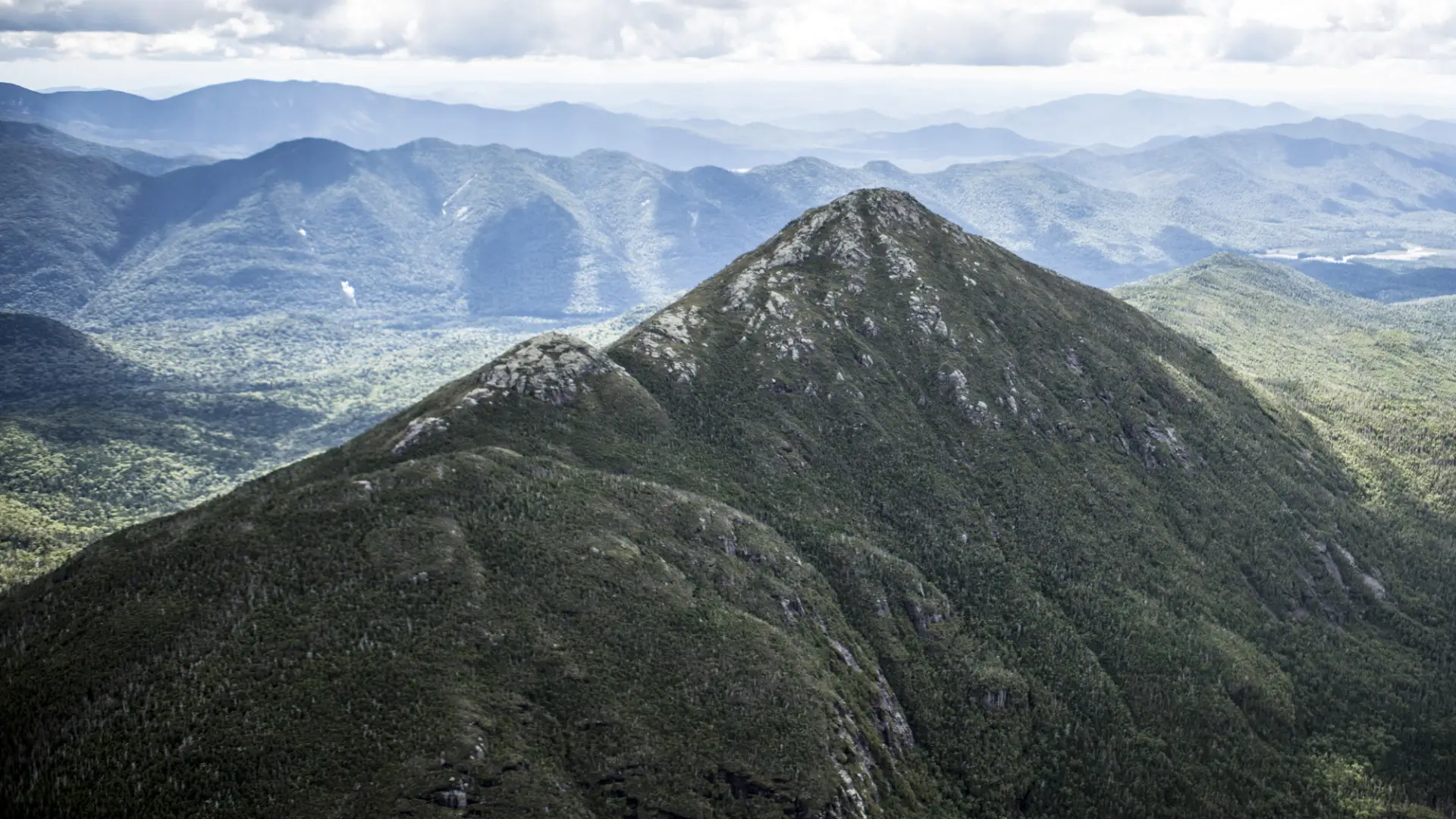
The Adirondack High Peaks have called many, many people to their famous trails since the first official 46er finish. In fact, hiking in High Peaks has become as synonymous with Lake Placid as the Winter Olympics and miracles. As of 2020, over 13,000 people have claimed eternal fame and glory by registering their completion of hiking all 46 Adirondack High Peaks.
But becoming a 46er is not all about reaching 46 summits and pushing yourself over challenging terrain. As Grace Hudowalski famously quipped, "It doesn't make any difference whether you reach the top, the important thing is how you make the climb." There is no set way etched in the anorthosite for how to become a 46er, but there is a R.I.G.H.T. way. Here’s what you have to do:
- Research the trails
- Instruct others in a meaningful way
- Give back to the mountains
- Have a plan
- Trust your gut
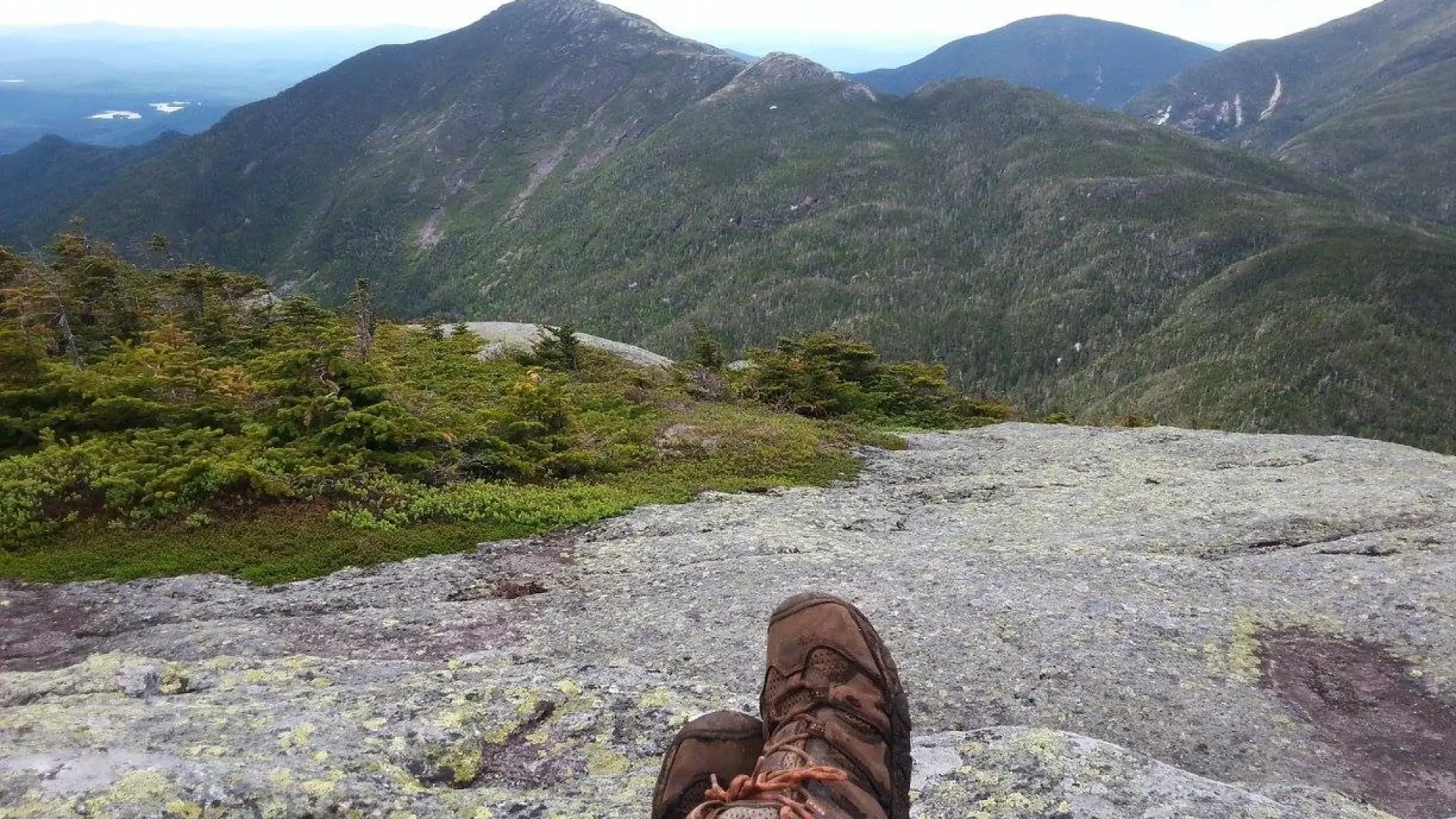
With some preparation, you too can traverse the harrowing, inspiring, humbling, and rugged High Peaks.
Research the trails
The 46 High Peaks all share the esteem of being “high peaks,” but they have varying degrees of difficulty. Do some research before setting off to make sure the mountain is the right one to start with. Mount Marcy is a glamorous option, being the tallest mountain in New York, but it’s an 18+ mile round-trip hike that can take all day, or sometimes longer. Many of the High Peaks have multiple trails or routes, so make sure you study a map and guidebook. Are you ready for the mileage, elevation gain, trail junctions, unmaintained trails? Some trails are notoriously harder than others (by way of trail condition, length, false summits, season, technical skill, and/or elevation change.) In order to enjoy your time in the woods, make sure you pick something that is best suited to your skills and experiences.
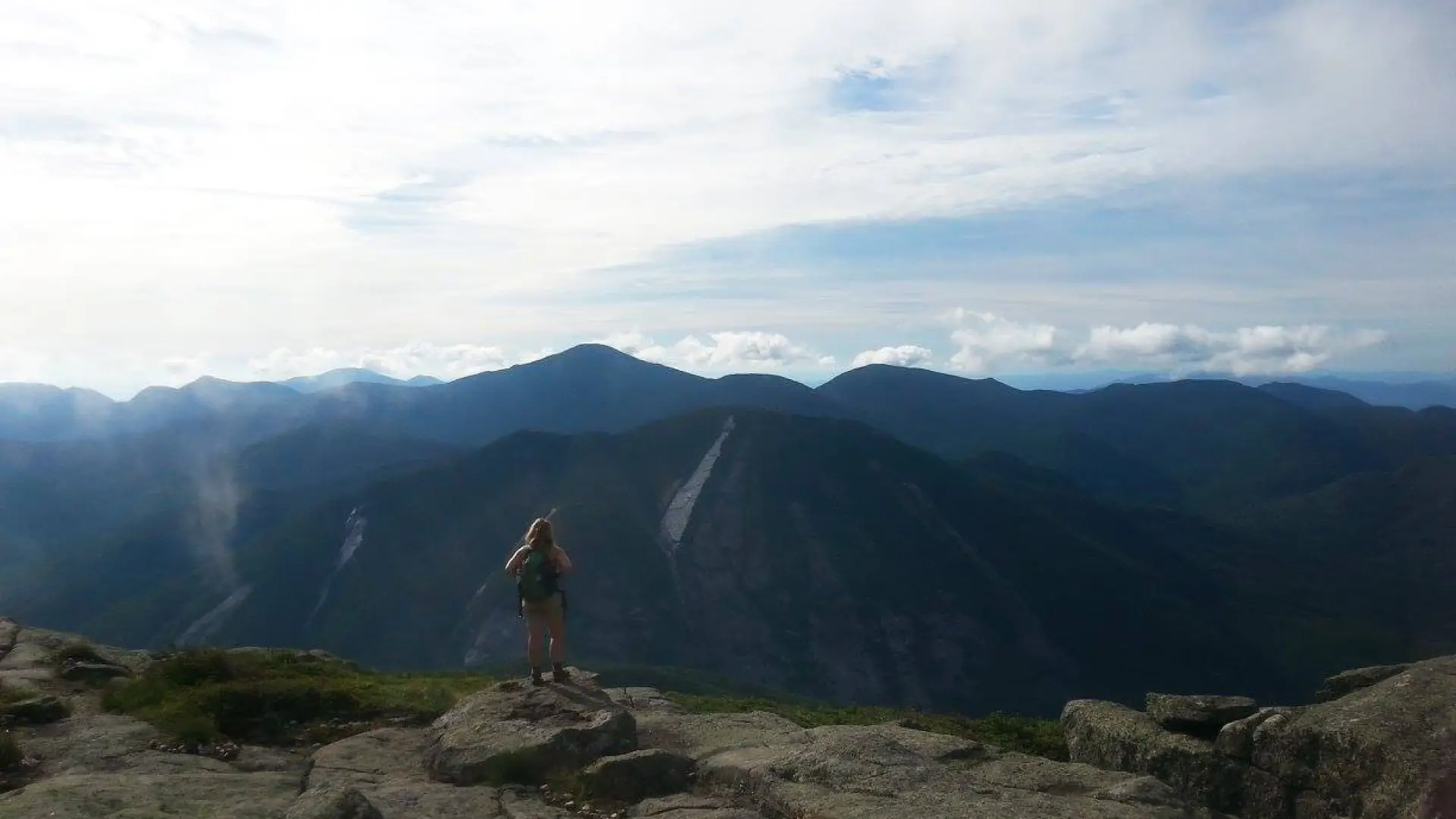
My suggestion: make a friend! Find a group hike or ask someone to go with you who has done the hike before. You don’t have to go at it alone. If that trail buddy has the same pace as you, the experience will be much more enjoyable! I am not a fast hiker (there are so many cool nature distractions along the way!), but many of my friends are speedy. I always feel better hiking with someone who I don’t have to run to keep up with! More importantly, though, a hiking buddy is someone who can lend a hand or be there to help if there is an injury.
Instruct others in a meaningful way
It’s inevitable. You will make mistakes. There are 46 mountains and lots of trail miles ahead of you. Frankly, I’ve made some mistakes myself. There is a shame culture on the internet to virtually roast people who aren’t “High Peak perfect,” but the reality is that we all start somewhere. We can all reach our summits (however high they may be) if we slow down and help each other learn along the way. And the best way to learn is through respectful and meaningful interactions. Leave No Trace ethics are more likely to be practiced when a person understands their own personal impact on the environment. The moral of the story: if you see someone who might not be making the most informed decision, kindly explain the proper way to do things. Yes, accidents do happen and being prepared is important, but don’t rudely make someone feel like they don’t belong outdoors. We all love the Adirondacks, so let’s share the love!
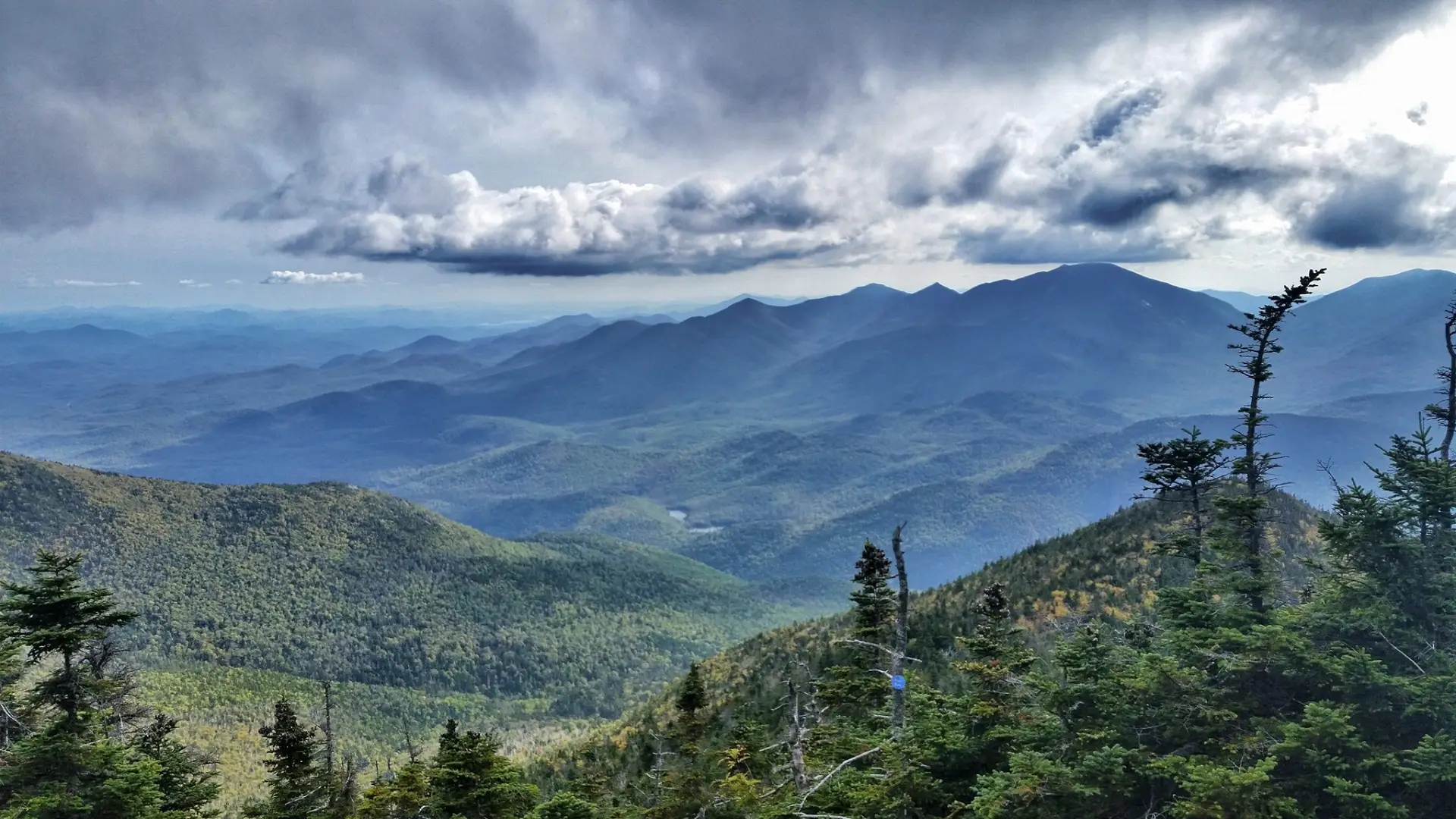
Before I climbed Cascade Mountain in 2016, I attempted to summit Whiteface Mountain in 2012. I say attempted because I did not summit. It was March, conditions were rough, and I was not prepared for so much ice. Honestly, I had no sense of how difficult a winter climb can be. After a disappointing descent, I didn’t step foot in the High Peaks again until 2016. I felt ashamed and embarrassed for my lack of preparedness, but I learned from the experience, and today I use a checklist to ensure I have all the gear I might need.

Now, imagine someone experienced saw me struggling on Whiteface and belittled me on site for my mistakes. There is a difference between helping and criticizing. How can you share things you’ve learned without being rude? Here are a few simple tips!
- Make a general observation first before jumping to conclusions. This way you can assess the general knowledge level of the person you’re speaking with. No one wants to start a conversation off by being yelled at for making a mistake. Once you’ve established a certain behavior might be a mistake, offer a suggested action and explain the impact of the situation.
- It might be hard sometimes, but expect the best from people! Long-term changes and responsible recreational behavior begin with mutual respect.
- Focus the conversation on how a certain behavior impacts the resource/environment instead of strictly disparaging someone.
Give back to the mountains
After you’ve completed the 46 High Peaks, you’ve earned a break. But just for a minute. Now it’s time to give back to the mountains! Organizations like the Adirondack 46ers, the Adirondack Mountain Club, and local municipalities frequently participate in trail maintenance days, host trailhead stewards, distribute information, host skills workshops, and mentor aspiring 46ers. Donations, volunteer hours, and memberships all help maintain the trails and help educate hikers, experienced and new.
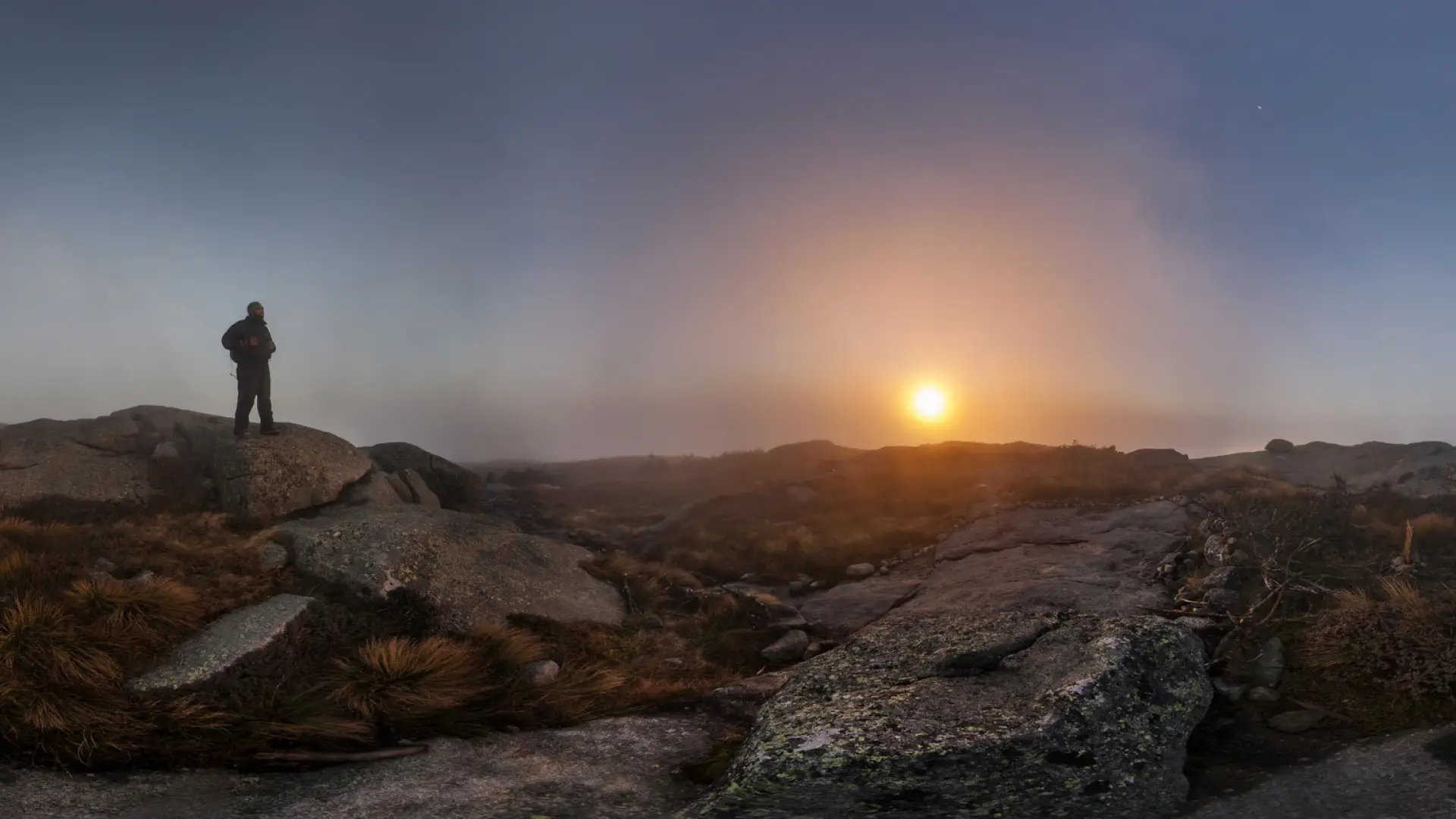
The Adirondack Mountain Club, in partnership with others, has stationed stewards on the summits of certain High Peaks since 1989 to help educate hikers on the fragile alpine habitat and responsible hiking behavior. The stewards spend days at a time out in the elements educating hikers, preforming scientific research, and maintaining trails. Supporting programs such as these are a great way to help ensure the alpine habitat is protected.
Want to know something you can do right now, today? One little thing you can do that can have a big impact is just pick up some litter or trash you see along a trail. No one wants to see garbage strewn about the woods. Leave the trails better than you found them as a way to say “thank you” to the mountains.
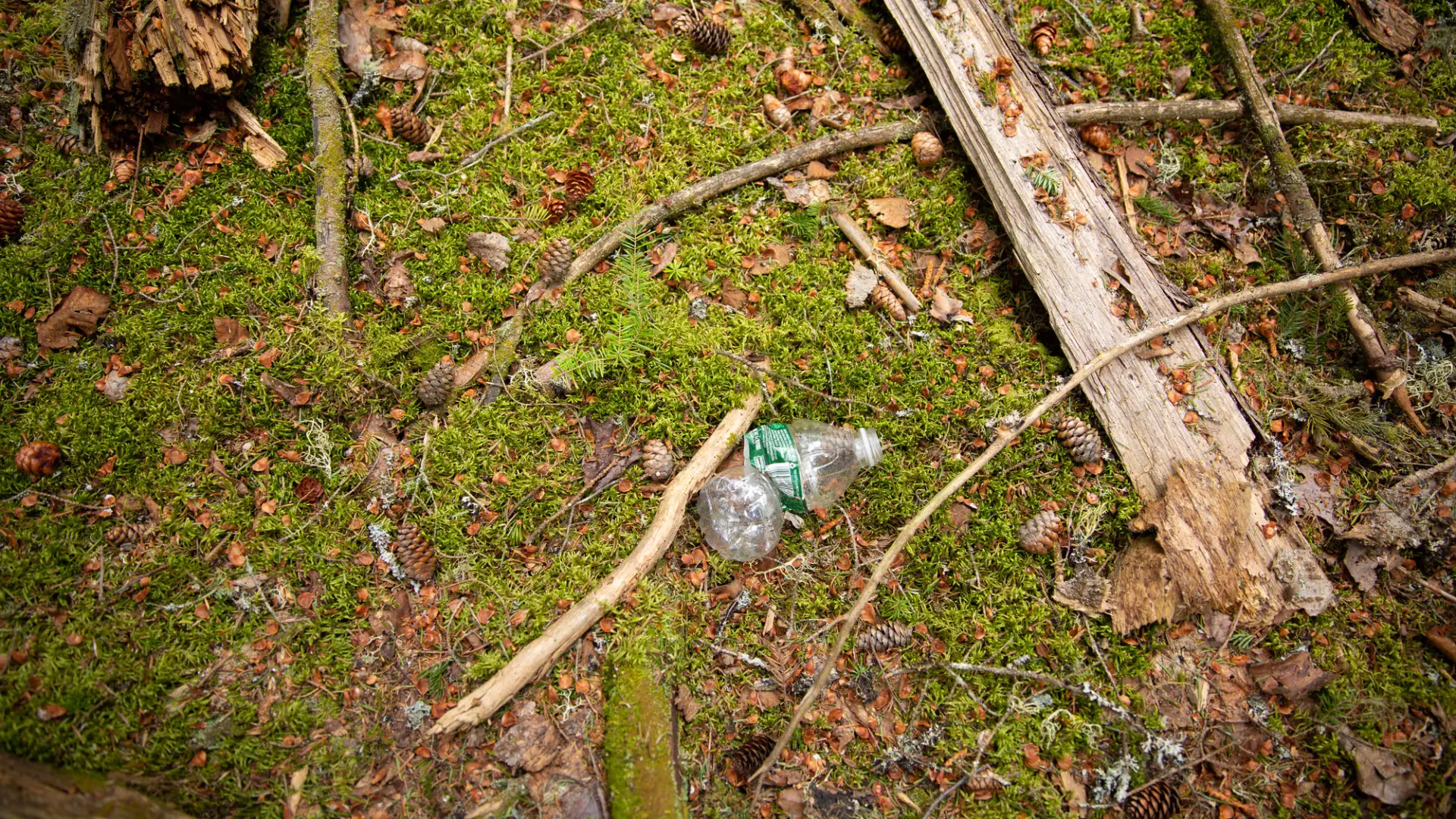
Have a plan
Obviously this step is very important. You should know what you’re going to do if you have an accident and need to spend a night in the woods. You should know what the weather is forecasted to be, and what weather potentially could pop up. Ahead of time, you should plan what you need to pack so you’re prepared for the day. If you're unsure if you're prepared, visit the Cascade Welcome Center run by the Adirondack Mountain Club for expert insights and tips (and gear!). Once you have a plan for the day, be sure to share it with someone who is not hiking with you. (Safety first!)

Maybe the best way to plan is to solicit advice from others who have experience. I asked some of my friends who have spent many hours hiking in the Adirondacks what they wish they had known before starting their own 46er journey. Here’s what some had to say:
- “That you can take your time and enjoy them [the High Peaks], and not try to crush them in one season.”
- “That Allen does, in fact, have a view.”
- “Just because someone didn’t like a specific mountain or trail doesn’t mean it’s bad. Yes, some are more difficult than others, but each mountain has its own merits.”
- “A mile in the High Peaks is much different than a mile on the street. One trail is nicknamed ‘The Elevator Shaft’ because it goes straight up. It’s no-joke, but it’s definitely an adventure.”
- “The terrain is gnarly and super tough! Get ready to be humbled!”
- “Always have a ‘plan b’ hike in case the weather isn’t great – one open summit, one treed!”
- “The mountains continue to get easier the more you do them.”
- “The mountains can defeat you not just physically, but mentally. They are well worth the challenge, though!”
- “How exhausting and glorious they are.”

But perhaps the best advice I’ve ever received is to …
Trust your gut
When you and your friend are ready to choose the right hike, it’s important to realize that you are by no means required to push yourself harder than you can handle. There is nothing that says you aren't allowed to turn around! I’ve done it many times, actually. Hey, I’ve even turned around less than 0.3 miles from summits because conditions were too dangerous. There is nothing wrong with admitting you can’t summit on a certain day. Believe me, you’ll look back on an experience more fondly if you don’t have memories of unnecessarily pushing yourself. Also, when we push ourselves beyond what our bodies can handle, we put our (and rescuers) lives in danger. The mountains aren’t going anywhere and will be there next time. If you find you aren’t ready for such an endeavor, don’t worry - there are tons of trails for all abilities around the entire Adirondacks.

Hit the trails!
Are you ready to start hiking in the High Peaks? Get the gear you might need at local stores in town (or buy second-hand to save some money!). At the end of the day, a hike in the High Peaks definitely means you deserve a hearty meal. Good thing there are lots of great restaurants in Lake Placid. Make a plan. Get the gear. Hit the trails. Grab a bite to eat. Relax. Repeat.

Remember, you don’t need to be a certain shape or size to hike in the High Peaks. The mountains are for everyone! Be prepared, and enjoy!